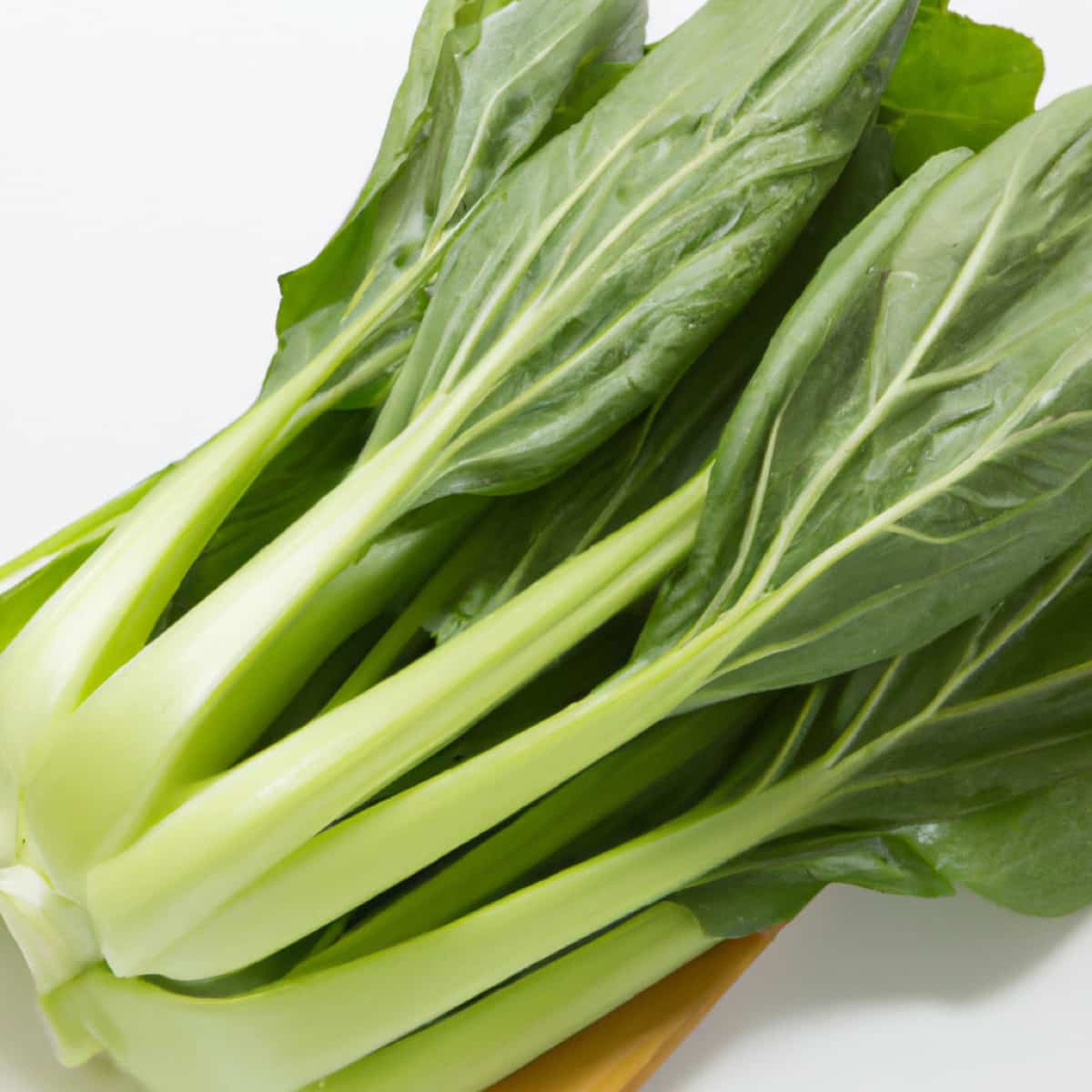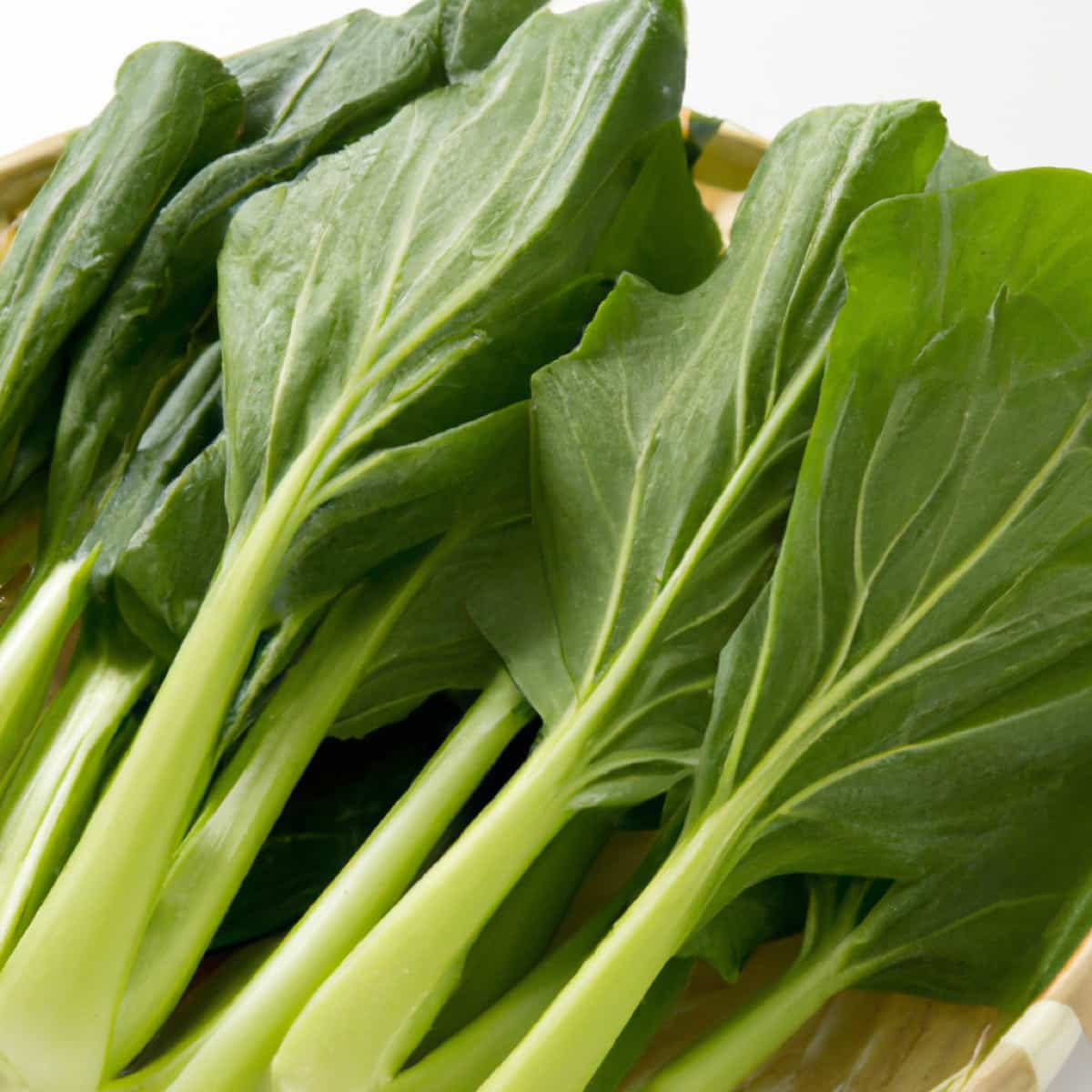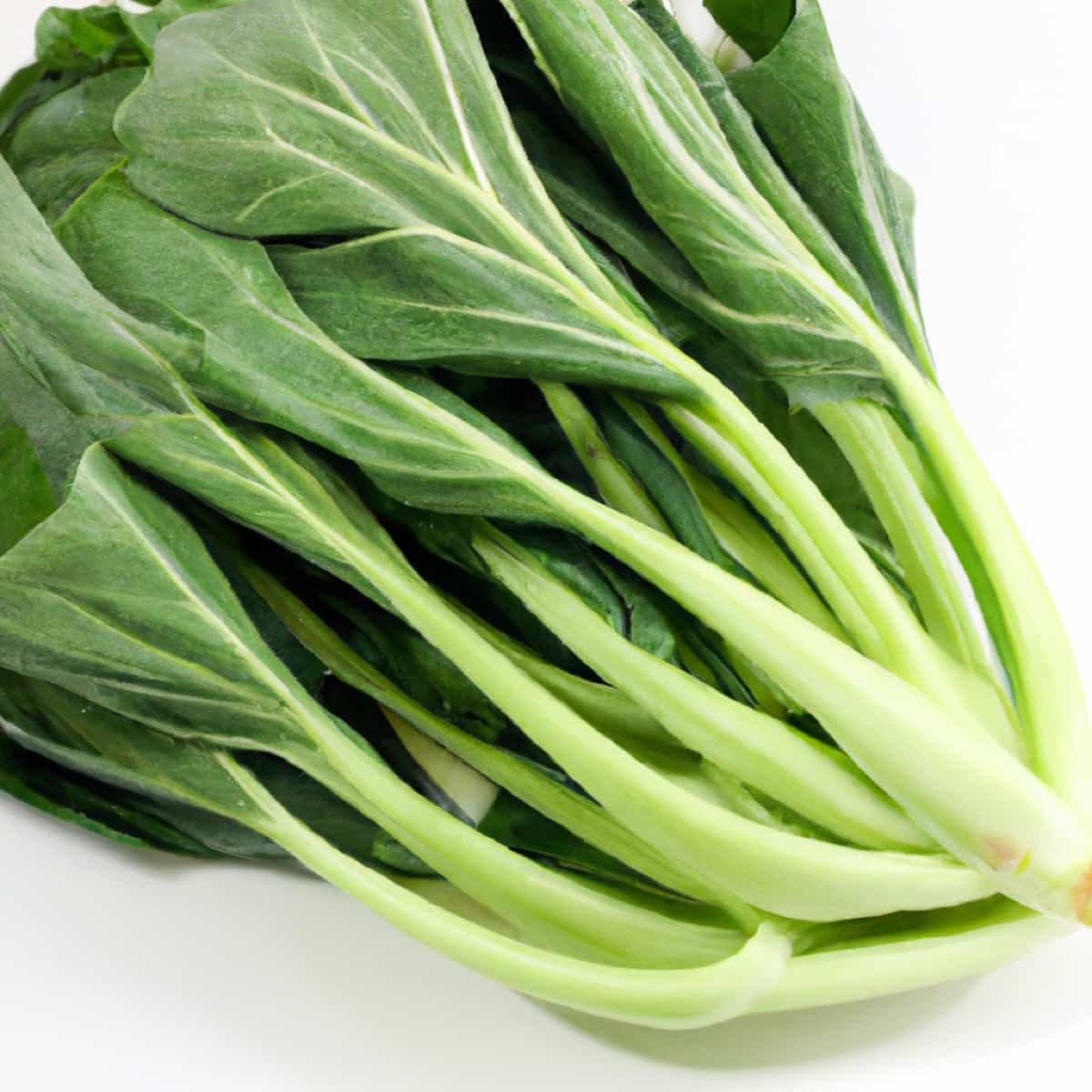Growing and caring for organic Komatsuna can be a rewarding experience, whether you are an experienced gardener or just starting. This versatile leafy green adds flavor and nutrition to your meals and offers the satisfaction of nurturing a plant from seed to harvest. Remember to choose a suitable location with well-draining soil, provide adequate sunlight, and keep the plants sufficiently hydrated.

Regularly monitor for pests and diseases, using organic pest control methods when necessary. And remember to thin out crowded plants to encourage healthy growth. When it comes time to harvest your Komatsuna, trim off the outer leaves or cut the entire plant to ground level if you prefer baby greens. Following these planting instructions and caring for your Komatsuna properly throughout its growth cycle will reward you with bountiful harvests of fresh and nutritious greens.
How to Grow and Care for Organic Komatsuna
Tips for Growing Organic Komatsuna
First and foremost, choosing the right location for your plants is important. Komatsuna thrives in full sun or partial shade, so find a spot in your garden with at least six hours of sunlight daily. Next, make sure you prepare the soil properly before planting. Komatsuna prefers well-draining soil with plenty of organic matter. Mix the soil with compost or well-rotted manure to improve its fertility and texture. When it comes time to plant your Komatsuna seeds or seedlings, space them about six inches apart to allow for proper growth.
Water them regularly but avoid overwatering, as this can lead to root rot. Consider natural methods like companion planting or homemade insecticidal soap sprays to keep pests at bay without chemical pesticides. For example, planting marigolds nearby can deter aphids and other common pests. Weeds can compete with Komatsuna for nutrients and water, so keep them under control. As for fertilization, organic options like seaweed extract or fish emulsion work well as they provide essential nutrients without harmful chemicals.
How to Care for Organic Komatsuna
Caring for organic Komatsuna is essential in ensuring healthy and abundant growth. First, make sure your Komatsuna receives sufficient sunlight. These leafy greens thrive in full sun but can also tolerate some shade. Aim for at least six hours of direct sunlight per day. Next, water your Komatsuna regularly but avoid overwatering. Keep the soil evenly moist but not soggy. Water deeply and allow the top inch of soil to dry out before watering again.
In case you missed it: How to Grow and Care for Organic Cumin: Planting Instructions

Mulching can help retain moisture and suppress weeds. If you spot any issues, take prompt action using organic pest control methods such as neem oil or insecticidal soap. To promote healthy growth, fertilize your Komatsuna with nitrogen-rich organic fertilizers. This will encourage vigorous leaf development without excessive flowering. Practice crop rotation by planting Komatsuna in different areas each year to prevent disease buildup in the soil.
Organic Komatsuna Soil Requirements
When growing organic Komatsuna, paying attention to the soil requirements is crucial. First and foremost, Komatsuna prefers well-draining soil rich in organic matter. This means incorporating compost or well-rotted manure into the soil before planting. Organic matter helps retain moisture while ensuring proper aeration – which is essential for healthy growth.
Maintaining a slightly acidic to neutral pH range from 6.0 to 7.0 is ideal for Komatsuna cultivation. You can test your soil’s pH using a simple testing kit and amend it accordingly by adding materials like agricultural lime (to raise pH) or sulfur (to lower pH). Regarding texture, loamy soils are highly recommended as they provide good drainage while retaining adequate moisture levels.
If your garden has heavy clay soils prone to waterlogging, consider amending them with sand or perlite to improve drainage. Remember that healthy plants start with healthy roots, so investing time and effort into creating an optimal growing medium will greatly contribute to the success of your organic Komatsuna garden.
Best Organic Fertilizers for Komatsuna
Adding compost to the soil is the most natural and effective way to feed your Komatsuna. Compost enriches the soil with essential nutrients, improves its structure, and encourages beneficial microbial activity. Another great option for organic fertilization is well-rotted manure. It provides nitrogen, phosphorus, and potassium – vital nutrients promoting Komatsuna’s leafy green growth. High in phosphorous content, bone meal is an excellent choice for promoting robust root development in young Komatsuna plants.
In case you missed it: How to Grow and Care for Organic Horehound: Planting Instructions

It also helps enhance overall plant strength and resistance to diseases. Fish Emulsion liquid fertilizer from fish waste is packed with nutrients like nitrogen, phosphorus, and trace minerals that plants readily absorb. Applying diluted fish emulsion regularly can boost growth and productivity. Remember to follow package instructions carefully when applying fertilizer to avoid overfeeding or burning your plants’ delicate roots.
Organic Pest Control for Komatsuna
There are plenty of organic pest control methods to keep those pesky critters at bay and ensure your Komatsuna plants stay healthy. Companion planting with mint, basil, or rosemary herbs is effective. These aromatic herbs can help repel common pests like aphids and cabbage worms. Plus, they add a delightful fragrance to your garden. Another natural deterrent is the use of homemade insecticidal soap.
Mix a few teaspoons of mild liquid soap with water in a spray bottle and apply it directly onto the leaves of affected plants. This solution suffocates insects without harming your precious Komatsuna. If you’re dealing with larger pests like rabbits or deer, consider using physical barriers such as fences or netting around your garden bed. This helps protect your crops from being devoured while allowing sunlight and rainwater to reach the plants. Look out for chewed leaves, discoloration, or webs that could indicate the presence of insects or spider mites.
Attracting beneficial insects like ladybugs and lacewings can be key allies in combating unwanted pests naturally. Planting nectar-rich flowers nearby will attract these helpful bugs that feed on harmful insects. Remember, prevention is always better than cure regarding pest control. By implementing these organic methods into your gardening routine, you’ll be able to enjoy bountiful harvests of delicious Komatsuna all season long.
Harvesting Organic Komatsuna Leaves
Once your organic Komatsuna plants have matured and reached a height of about 6-8 inches, it’s time to start harvesting the delicious leaves. Harvesting is a rewarding process that allows you to enjoy your labor’s fruits (or, in this case, leaves). To harvest your Komatsuna leaves, use scissors or garden shears to snip off the outermost leaves at their base.
It’s best to start by removing the larger outer leaves, which tend to be more mature and ready for harvest. As you continue to harvest throughout the growing season, remember not to remove all leaves from a single plant at once. By selectively harvesting just a few outer leaves from each plant at a time, you allow the inner younger leaves enough time and space to continue growing. This ensures a continuous supply of fresh Komatsuna throughout the season.
In case you missed it: How to Grow and Care for Organic Fennel: Planting Instructions

Common Organic Komatsuna Diseases and Remedies
One of the challenges that organic Komatsuna growers may face is dealing with diseases that can affect their plants. However, by following proper care practices and implementing natural remedies, you can minimize the impact of these diseases on your crop. One common disease that affects Komatsuna is downy mildew. This fungal infection causes yellow spots on the leaves, eventually turning brown and dying. To prevent its spread, it’s crucial to provide adequate air circulation around your plants by spacing them properly.
Another potential issue is powdery mildew, a white or grayish powder-like substance that appears on the surface of leaves. To combat this disease organically, you can apply a mixture of baking soda and water to affected areas or use neem oil as a natural fungicide. Root rot is another concern for Komatsuna growers. This occurs due to overly wet soil conditions or poor drainage. To prevent root rot, add organic matter such as compost or vermicompost to ensure that your soil has good drainage capabilities.
Aphids are common pests that attack many leafy greens, including Komatsuna. These small insects feed on plant sap and can cause significant damage if left untreated. To control aphids naturally, spray your plants with a solution from crushed garlic cloves mixed with water. By proactively identifying and addressing these common diseases early in their development stages, you can protect your organic Komatsuna crop from extensive damage without relying on synthetic chemical interventions.
Organic Komatsuna Companion Planting Strategies
Companion planting is a smart gardening technique that involves growing different plants together to maximize the benefits they provide to each other. Regarding organic Komatsuna, several companion plants can help promote healthy growth and prevent pests. One excellent companion plant for organic Komatsuna is radishes. Radishes have natural pest-repellent properties, and their strong odor helps deter common pests like aphids and flea beetles.
Radishes have shallow roots that help break up compacted soil, allowing better nutrient absorption for the Komatsuna. Another great companion plant for organic Komatsuna is lettuce. Lettuce provides shade and acts as a living mulch, helping retain moisture in the soil while suppressing weed growth. The dense foliage of lettuce also helps protect the delicate leaves of the Komatsuna from harsh sunlight or extreme temperatures.
In case you missed it: How to Grow and Care for Organic Lemon Balm: Planting Instructions

Furthermore, planting onions near your organic Komatsuna can be beneficial. Due to their pungent smell, onions repel pests such as aphids and onion flies. They also improve the overall health of nearby plants by releasing sulfur compounds into the soil, which act as natural fungicides.
Combining marigolds with organic Komatsuna in your garden beds can offer multiple benefits. Marigolds attract pollinators like bees and butterflies, which aid in cross-pollination for healthier crops. Additionally, marigolds produce allelochemicals that deter harmful nematodes in the soil. By implementing these companion planting strategies with your organic Komatsuna, you create a visually appealing garden and enhance its productivity naturally without relying on synthetic chemicals or pesticides.
Growing Komatsuna in containers
Growing Komatsuna in containers is a great option for those with limited space or who want more control over the growing conditions. Containers can be placed on balconies, patios, or indoors near a sunny window. To start growing Komatsuna in containers, choose a container at least 12 inches deep with good drainage. Plant the Komatsuna seeds about half an inch deep and water thoroughly. Place the container in a location that receives full sun or partial shade. Keep the soil moist but not waterlogged.
Watering from below by placing the container in a water tray can help prevent overwatering and ensure even moisture distribution. Fertilize regularly with an organic liquid fertilizer for healthy growth. Follow package instructions for application rates and frequency. Monitor for pests such as aphids or caterpillars, which can damage your plants. Use organic pest control methods like hand-picking insects off leaves or insecticidal soap if necessary.
Harvest Komatsuna when leaves reach their desired size by cutting them near their base using clean scissors or pruning shears. Leave some leaves behind to allow regrowth for future harvests. Remember to rotate your crops yearly to minimize disease buildup and maintain soil health. Growing Komatsuna in containers offers convenience and flexibility while enjoying fresh homegrown greens throughout the season.
In case you missed it: How to Grow and Care for Organic Epazote: Planting Instructions

Conclusion
Growing and caring for organic Komatsuna can be a rewarding experience for any home gardener. This versatile leafy green adds a unique flavor to your meals and provides numerous health benefits. By following the planting instructions and care tips, you’ll be well on your way to enjoying a bountiful harvest of delicious Komatsuna. Remember, starting with quality seeds or seedlings is essential for success.
Take the time to prepare your soil properly, ensuring it’s well-drained and nutrient-rich. Regular watering and providing adequate sunlight will help promote healthy growth. Throughout its growing season, pay attention to signs of pests or diseases so that you can address them promptly using organic methods. And when it comes time to harvest, utilize proper techniques to ensure maximum freshness and prolong storage life.
- Gardening Techniques in Planting Vegetables
- Where to Place Indoor Plants in Your Home
- How to Grow Tomatoes Organically at Home: A Comprehensive Guide
- Organic Gardening on a Budget: Low-Cost Methods and Materials
- Gongura Seed Germination and Planting Methods
- Cabbage Seed Germination and Selection
- Broccoli Seed Germination and Selection
- Asparagus Seed Germination and Variety Selection
- Seasonal Flower Gardening: Best Practices for Spring, Summer, Fall, and Winter
- How to Grow Hibiscus from Flower
- Plantation Ideas for Home Decoration: A Beginners Guide
- Flower Garden Designs and Layouts for Beginners
- Planting and Spacing Techniques in Papaya: A Beginner’s Guide
- Growing Gold: Essential Techniques for Planting Pineapples
- How to Make Kalanchoe Plant Bushy: Home Remedies and Solutions
- 11 Reasons Why Your Gardenia is Not Blooming: Home Remedies and Solutions
- Eco Elegance: The Guide to Designing a Drought-Tolerant Landscape
- Gardening on a Slope: Strategies for Hillside Landscaping
- Nourish and Flourish: Top Organic Mulches for Thriving House Plants
- Everything You Want to Know about Indian Mogra Flower: Discover Uses and Growing
- Green Thumb Success: Expert Tips for Cultivating Greenhouse Pumpkins All Year Round
- Maximize Growth & Flavor: The Ultimate Guide to Companion Planting in Herb Gardens
- How to Control Rhododendron Problems Naturally: Home Remedies and Organic Ways to Fix Them
- Natural Magic: The Remarkable Benefits of Cinnamon for Plants
- Best Steps to Revive Dying Tulip with Natural and Organic Treatment
- 10 Reasons Why Your Angel Trumpet is Not Blooming: Remedies and Treatment
- How to Fix Periwinkle Leaf and Flower-Related Problems: Natural Remedies and Solutions
- How to Fix Zinnias Leaf and Flower Problems: Discover Natural and Home Remedies
- Organic Steps to Induce Lemon Tree Flowers: A Comprehensive Guide
- Bloom Booster: Crafting the Perfect Homemade Bougainvillea Fertilizer
- Optimizing Growth: A Guide to Applying NPK Fertilizer for Potted Plants
- 10 Best Homemade Fertilizers for Rubber Plant: DIY Recipes and Application Method
- How to Boost Female Pumpkin Flowers: Effective Steps for More Flowers and High Yields
- Transform Your Indoor Garden: Top Benefits of Pink Salt for Houseplants
- 10 Best Homemade Fertilizers for Peacock Plants (Calathea): Easy DIY Guide
- Unlock Blooms: 9 Reasons Why Your Potted Chrysanthemum is Not Blooming